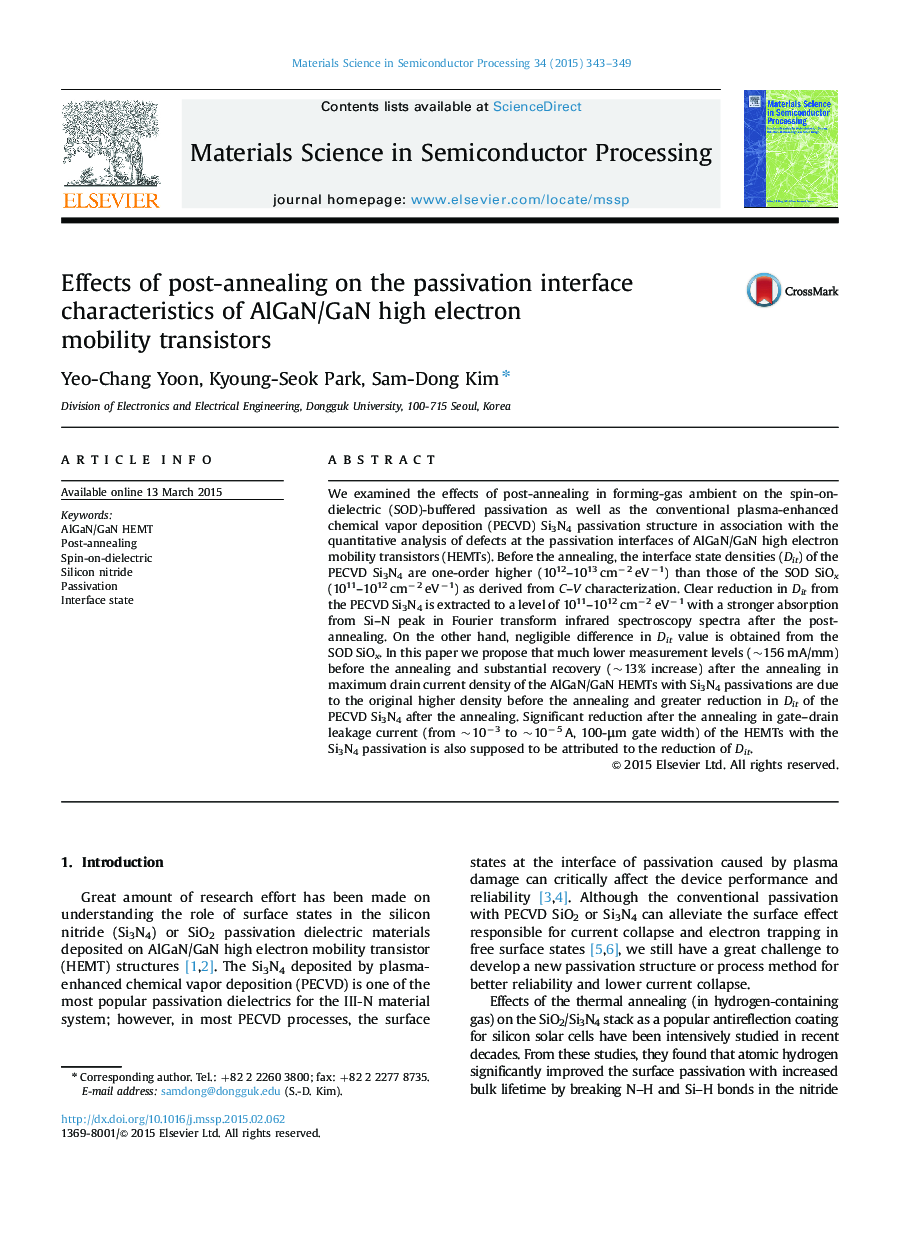| Article ID | Journal | Published Year | Pages | File Type |
|---|---|---|---|---|
| 727988 | Materials Science in Semiconductor Processing | 2015 | 7 Pages |
We examined the effects of post-annealing in forming-gas ambient on the spin-on-dielectric (SOD)-buffered passivation as well as the conventional plasma-enhanced chemical vapor deposition (PECVD) Si3N4 passivation structure in association with the quantitative analysis of defects at the passivation interfaces of AlGaN/GaN high electron mobility transistors (HEMTs). Before the annealing, the interface state densities (Dit) of the PECVD Si3N4 are one-order higher (1012–1013 cm−2 eV−1) than those of the SOD SiOx (1011–1012 cm−2 eV−1) as derived from C–V characterization. Clear reduction in Dit from the PECVD Si3N4 is extracted to a level of 1011–1012 cm−2 eV−1 with a stronger absorption from Si–N peak in Fourier transform infrared spectroscopy spectra after the post-annealing. On the other hand, negligible difference in Dit value is obtained from the SOD SiOx. In this paper we propose that much lower measurement levels (~156 mA/mm) before the annealing and substantial recovery (~13% increase) after the annealing in maximum drain current density of the AlGaN/GaN HEMTs with Si3N4 passivations are due to the original higher density before the annealing and greater reduction in Dit of the PECVD Si3N4 after the annealing. Significant reduction after the annealing in gate–drain leakage current (from ~10−3 to ~10−5 A, 100-μm gate width) of the HEMTs with the Si3N4 passivation is also supposed to be attributed to the reduction of Dit.
